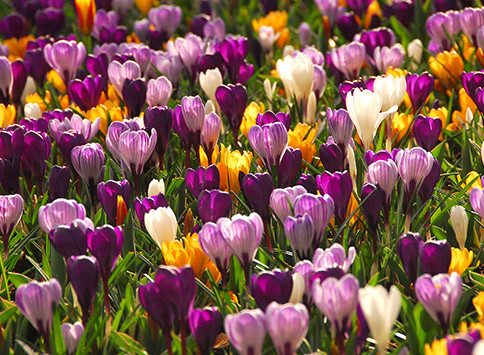Do you like a beautiful, coloured garden, but don’t you want to put too much work into it? Then Naturalising bulbs are really something for you! Put the bulbs in the ground in the autumn and enjoy these beautiful flowers in the spring. The special thing about Naturalising bulbs is that they are hardy, they come back for years and they multiply. When they are in a place with the right light and air circumstances, you will not have any work on them. Because they create new bulbs themselves, you enjoy more of them every year!
Types of Naturalising bulbs
Many Spring Flowering bulbs are suitable for naturalising. Examples include Crocuses, Daffodils, Alliums, Anemones, Hyacinths, Grape Hyacinths, Camassias and a number of Tulips. We have more than 100 Naturalising bulbs in our range. Curious which bulbs these are? Go to the Spring Flowering bulbs and click on "filter". Click "yes" at naturalising and you will see all our Naturalising bulbs!
Planting Naturalising bulbs
When you are going to plant Naturalising bulbs, it is important that you pay attention to a number of things. You can already plant the Naturalising bulbs in early autumn. Plant the bulbs no later than November, so that you can enjoy a spectacle of colour every year. Plant the bulbs about 3 times as deep as the size of the bulb. Do not do this in straight lines, but randomly. This is how you create the best effect. With the larger bulbs it is important to make sure that the tips are upwards, because this is where the flower comes out. When the soil is hard, we recommend digging up the soil first. After planting, press the soil a little bit and let nature continue to do its work.
Ideal pitches
Naturalising bulbs like the soil to be well-draining and nutrient-rich. Places where they also like to be are under deciduous trees or shrubs, in borders or between low ground covers. Do you want to plant the flower bulbs in the grass? That is also possible! It is important that you only mow the grass after the bulbs have sown, this is about 6 to 8 weeks after flowering. Depending on the flowering time, you can mow the grass in May or June. After this, it no longer matters how often you mow the grass.

The bulbs have finished flowering, what now?
Do not cut the flowers when they have finished flowering. They get their energy from this, so that they multiply. The bulbs themselves provide new bulbs, so you can enjoy a colour explosion again the following spring.
Have you become enthusiastic and do you also want Naturalising bulbs? View our range and do you have any questions about Naturalising bulbs? Feel free to ask our customer service.

